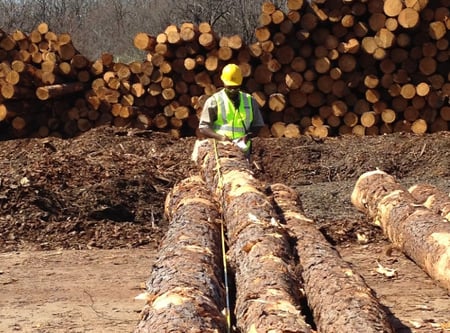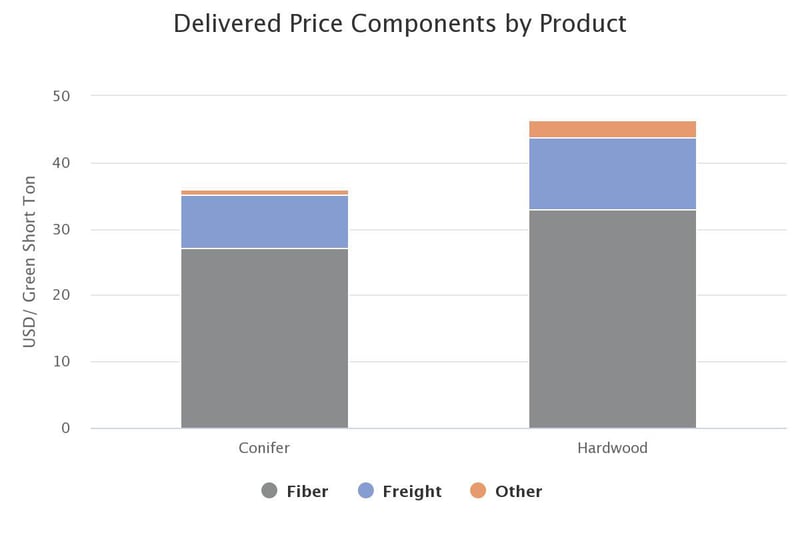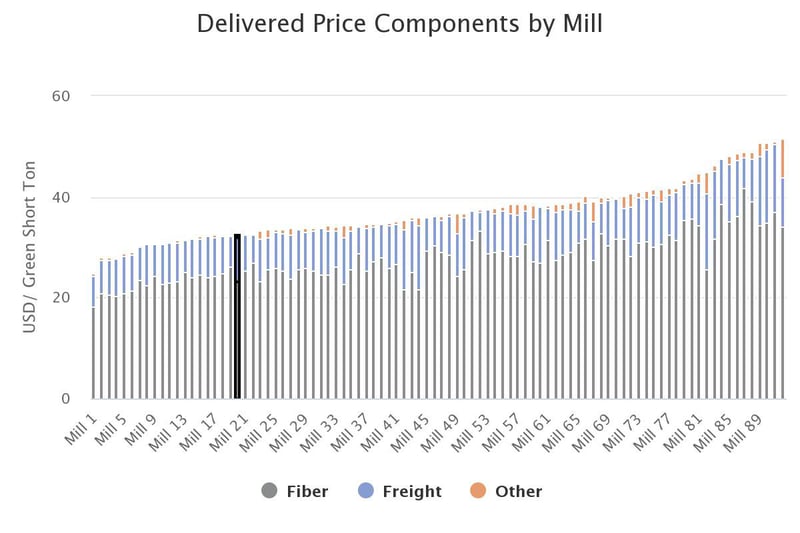
Like all manufacturing-based industries, all supply chains that feed these industries are different. Some are longer and more complex than others, and some have benefited from technological advancements more than others in recent decades. But they all have at least one thing in common: a potential weak link.
Some of these weaknesses are inherent to the forest industry in ways that seem beyond our control: weather, harvesting conditions, growth rates, etc. Others might not have been considered weaknesses in days gone by, but they develop into challenges over time as inevitable adjustments occur and technology impacts the supply chain.
The most sound, sustainable and profitable manufacturers, however, play the long game with a keen survival instinct. They persevere because they are aware of the unique characteristics in their own supply chains and they are agile during periods of uncertainty.
Modeling for Uncertainty
Modern manufacturers are in a unique time and place. The closest analogous historical incident to which we can compare the massive amount of uncertainty is the Great Recession that began in 2008, and even that is not a very accurate comparison. But in the w ake of that occurrence, consulting firm McKinsey & Company wrote an excellent reminder about the importance of building flexible supply chains.
ake of that occurrence, consulting firm McKinsey & Company wrote an excellent reminder about the importance of building flexible supply chains.
“The global downturn’s speed and severity have significant implications for the supply chains of global manufacturers. Among steelmakers, chemical players, and some high-tech companies, for instance, order books—and therefore prices—are under tremendous pressure. Output in the steel industry dropped by an unprecedented 30 percent and prices by about 50 percent from June 2008 to December 2008,” the authors wrote.
The article continues, “That kind of volatility wreaks havoc on traditional supply chain planning: the process for determining production levels, raw-material purchases, transport capacity, and other vital factors, largely by examining historical pat
terns of demand. ‘Every month, we produce a rolling three-year plan,’ said one metals executive recently, ‘but right now I can’t see even three weeks ahead.’”
A failure to plan for uncertainty will strike in ways that once seemed unimaginable, much like the situation we currently find ourselves in. How can such an event impact a manufacturer using forest raw materials?
Business Case Study
Take, for example, a mill that selected a location many decades ago near the coast on the edge of a port city. Initially, the site provided the logistical advantage of easy access for shipping end products. Since the mill was located on the outskirts of a city, wood resources were readily available at a reasonable cost and transport to the mill was unimpeded.
Nothing stays constant forever, however, and the city experienced strong growth in a positive economic climate that accelerated exponentially. Both the city and mill production grew and, over time, the mill became surrounded by urban development. As a result, trucking wood to the mill became more and more difficult and expensive due to new traffic restrictions. While the mill’s location was once a strategic advantage, it ultimately transformed into an inherent weakness: an unmanageable and unstable procurement zone.
Managing wood fiber availability and cost was already a challenge because the mill’s procurement zone was limited to a 180ᵒ arc (instead of the standard 360ᵒ arc). However, after the already-reduced supply area was gradually eroded by suburban encroachment, the risk exposure of the original weak link became even more pronounced.
How can such a mill respond to these supply chain challenges, which no one planned for just a few decades ago?
- Mill management can make modifications over time, both in anticipation of and in reaction to the changes occurring around the facility. Is rail service accessible? If so, the mill may be able to extend the line to the mill and alleviate some of its transportation issues.
- The company can also be proactive with local and regional government agencies by participating in the planning processes to improve the highway and road systems. These efforts can pay off in time by eliminating a potentially crippling weakness and turning it into a stronger link in the supply chain as truck turn-around at the mill can be minimized.
- Mill management must also account for changes to the supply system while having to reach further and further for their wood resource. They might strategically locate remote woodyards in outlying areas to take advantage of on-demand inventories. In addition, they might analyze the possibility of taking one of the mill’s initial strengths, convenient port access, and adding it to the wood and fiber supply chain.
While the supply chain for this example mill changed over time, its weak links can be addressed and overcome by a continuous improvement process that supports the mill’s ability to stay competitive and survive. “As companies rethink the way they plan, they must also learn how to act on the resulting decisions more quickly and flexibly. When raw-material and transport costs and the use of equipment shift dramatically, for example, companies must be prepared to revisit well-understood trade-offs…” the McKinsey article adds.
Constant Improvement Drives Strategic Advantage
One of the foundations of lean manufacturing is the Japanese concept of Kaizen, a striving for continuous, daily improvement. Continuous improvement is a comprehensive concept that requires meticulous attention to detail and nimble operating procedures to sustain. For the forest products industry—an industry that is diverse and susceptible to the effects of myriad market variables—lean manufacturing can bring tangible value to the supply chain and improve strategic positioning in the market.
Quality data is what differentiates a Kaizen-based strategy from a reactionary lurch during periods of uncertainty. For instance, the improvement cycle associated with the renowned Six Sigma process methodology begins with a concrete procedure:
- Define: Identify the problem and define the scope of improvements
- Measure: Collect business data
- Analyze: Conduct root cause analysis
- Improve: Develop potential solutions and evaluation criteria
- Control: Monitor progress and make adjustments
Taking the analysis a step further, the methodology for optimizing the wood fiber supply chain is similar to the above approach in that it begins by analyzing and defining the scope of the business’s goals. Once this determination has been made, the process follows a comparable path towards improvement based on the reliability of transaction-based data:
- Identify market position and set goals
- Uncover inefficiencies, issues and their root causes
- Develop and implement strategic solutions
- Measure the results
- Repeat the process
Just as Kaizen represents the continuous practice of improvement, the wood supply chain optimization process is designed to be both flexible and cyclical as well. Its nimbleness must allow for the analysis of any number of custom criteria including geography, species type, mill type and mill consumption just to name a few.
For example, the graphs below illustrate the delivered wood and component costs for a set of sample mills, highlighting the market position of a selected sample mill (black). This kind of accurate, reliable data—down to the penny, in fact—is the basis for identifying a true market position that will drive the process of improvement and supply chain optimization, enabling the sample mill in this case can move through the improvement process with confidence.


We believe that the continual process of evaluation and goal setting using the strategic application of reliable datasets is the most effective way to succeed in the present and plan for the future. Constant analysis of current market prices and market intelligence is imperative to minimizing costs and maintaining profitability in a highly fluid and volatile market.


 Pete Coutu
Pete Coutu



